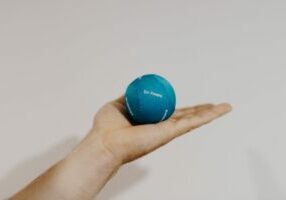 Foam Rollers have become a staple in gyms and clinics all over the country. So why are healthcare and exercise professionals so fond of these cylindrical entities?
Foam Rollers have become a staple in gyms and clinics all over the country. So why are healthcare and exercise professionals so fond of these cylindrical entities?
Let’s break it down:
1. They’re multi-taskers
Foam rollers are great for relieving discomfort and pain by loosening tight musculature and relieving aching knots. But did you also know that rolling after a workout can reduce delayed onset muscle soreness, the kind that sets in 36-48 hours following a workout? And rolling before your workout can help free up shortened tissues allowing your joints and muscles to work in an ideal way; it can actually help you move better. There are also techniques to help you relieve tension and simply relax.
2. They’re low risk
There are very few ways to hurt yourself using a foam roller. The few precautions include: avoid rolling directly over bone; avoid areas of known orthopedic injury unless otherwise directed; and watch out for clothing and hair getting stuck under it as you roll.
3. They’re great for self-treatment
Doing self-therapy between clinic visits is the best way to make progress on those nagging injuries, or prevent them from coming back. Foam rolling is a great way for you to be in control of your own treatment. If you’re going to abuse your body, you better give it some TLC too!
4. They’re easy to use, once you know how
Foam rollers can be used by anyone, anytime, and can hardly be overused. They are most effective, however, when used properly. Many times people have access to one but don’t know how to use it. In our clinic, we have foam roller handouts that you can stop by and grab any day! Our Head 2 Toe Facebook page has instructional videos on foam rolling which you should check out our Facebook! I also encourage you to experiment with your roller. Use the handout as a guide but move your leg a little to either side, lean to one side or the other, move your arm further up or down and see what feels right to you. Small differences in angles can expose smaller muscles hiding under larger ones. So experiment, find those spots that hurt so good.
5. The more you use it, the more you like it
There is a deep love-hate relationship that begins with someone and their foam roller. At first, it’s moderately uncomfortable to use, like when someone pushes on that knot in your back and it’s painful but feels good at the same time. But a funny thing happens when you use your roller regularly; the relationship weighs more towards love-love. Dare I say it becomes addicting! You find yourself sitting at work wishing you had one hidden under your desk. So if you’re new to the experience keep in mind that it will get better. Much, much better.
We have foam rollers for sale at Head2Toe! Ask about it at your next visit or pop in any time during business hours to start your foam rolling relationship.
Written by Head 2 Toe Staff
Exercises You Can Do at Home after a Visit to the Chiropractic Clinic
Stay active at home with exercises from ‘Exercises You Can Do at Home after a Visit to the Chiropractic Clinic’.
Read MoreAthletic Therapy: A Vital Component in Sports Rehabilitation
Discover the importance of athletic therapy in sports rehabilitation in our insightful blog on ‘Athletic Therapy: A Vital Component in Sports Rehabilitation’.
Read MoreA Comprehensive Guide to Spinal Therapy for Athletes
Discover the benefits of spinal therapy for athletes in our comprehensive guide ‘A Comprehensive Guide to Spinal Therapy for Athletes’.
Read MoreHow Chiropractic Techniques are Advancing in Pain and Injury Treatment
Discover the latest advancements in pain and injury treatment through innovative chiropractic techniques.
Read MoreSpine Rehabilitation: How Corrective Exercises Can Help with Posture and Pain Relief
Discover how corrective exercises in spine rehabilitation relieve pain and improve posture – read more now!
Read MoreCorrective Exercises: Your Secret Weapon Against Chronic Pain
Combat chronic pain with corrective exercises featured in ‘Corrective Exercises: Your Secret Weapon Against Chronic Pain’.
Read More




